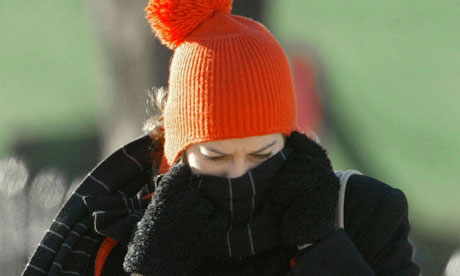
The Met Office estimates that for every one-degree drop in temperature below 18C, winter deaths rise by 1.4%. Cold kills – even without true hypothermia – and it's more likely to do so in countries that aren't used to severe chills. Severe cold weather increases the likelihood of blood clots (and therefore strokes and heart attacks) so you should keep your living room at around 21C, especially if you have an older person living with you.
What is hypothermia?
There are three degrees of hypothermia – mild, moderate and severe. Mild hypothermia is when the body's temperature falls to below 35C (it's usually around 37C). Severe hypothermia starts at below 30C. Hypothermia stops the body carrying out its normal metabolic functions so it effectively shuts down. If the hypothermia is severe enough the heart will start beating irregularly and the person could die.
What causes it?
Hypothermia is caused by cold – which can be encountered outside or inside. Waiting for a bus in the cold wind, for instance, can reduce an older person's core temperature.
What are the symptoms?
Mild hypothermia starts with shivering, feeling cold and tired, and looking pale. Moderate hypothermia causes stronger shivering, confusion (although this may only be picked up if you ask the person a question – they may be unaware of it themselves), memory loss, poor co-ordination, weakness, sleepiness, feeling scared or sometimes just indifferent to what is happening. With severe hypothermia the shivering eventually stops – because it hasn't generated enough energy to warm the body. The person's breathing will become more shallow, their pulse will slow and they will become unconscious.
Who is at risk?
Anyone who can't regulate their own temperature – such as babies and older people, anyone under the influence of alcohol, or who has Alzheimer's disease. Homeless people are clearly at risk.
How can it be treated?
It is best avoided by dressing warmly (wear a hat), changing out of wet clothes, and wrapping children and elderly people up in layers of clothing. Drinking warm drinks, eating regularly and keeping your home warm also help.
Severe hypothermia is a medical emergency and needs hospital care. If someone is cold, shuts down, and is either not shivering and unconscious, or unable to control their shivering, this is life threatening. If you are in any doubt get them to a hospital as it can be hard to gauge how serious hypothermia is.
If you think someone has mild hypothermia, they need to be moved somewhere that is dry and warm. They should be gently wrapped in blankets, but not put in a warm bath as this will re-heat them too quickly. Don't give them a stiff whisky as this doesn't help either – a warm cup of sweet tea is pretty good for everything.
When should I see my doctor?
Anyone who has hypothermia should see their doctor.

